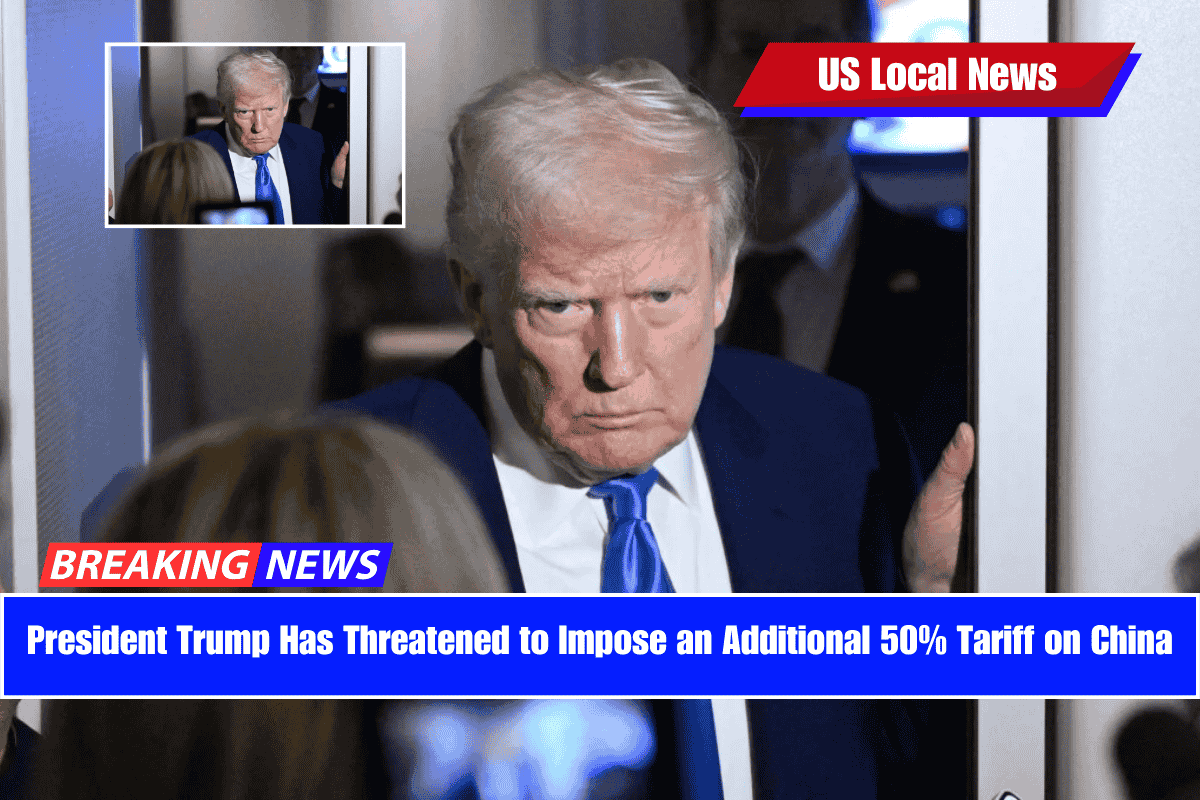President Donald Trump has announced a strong warning to China in the ongoing U.S.-China trade war, saying the United States will impose an additional 50% tariff on Chinese imports if Beijing does not withdraw its new 34% tariff on American products.
This move comes just days before Trump’s earlier tariffs are set to go into effect and adds to the growing economic tension between the world’s two largest economies.
Trump’s Message to China: Cancel Tariffs or Face More
Speaking through a post on his Truth Social platform on Monday, President Trump stated:
“Any country that retaliates against the U.S. by issuing additional tariffs… will be immediately met with new and substantially higher tariffs.”
He gave China a deadline of April 8, 2025, to reverse its 34% import tax on U.S. goods. If not, the U.S. will hit back with an additional 50% tariff starting April 9.
The Bigger Picture: Reciprocal Tariffs and “Liberation Day”
Earlier this month, on April 2, Trump introduced a 10% global import tax on goods coming from about 90 countries, including major trade partners like the European Union and China. He described the move as “Liberation Day”, claiming the new tariffs would help reduce America’s long-standing trade imbalances.
These actions are part of Trump’s broader push for “reciprocal trade”, which means foreign nations should lower their import taxes on U.S. goods—or face similar or higher tariffs on their own exports to America.
China’s Response: A 34% Tariff on U.S. Products
In response to Trump’s new tariffs, Beijing announced its own 34% tariff on all U.S. imports, which is set to begin on April 10. China had previously criticized Trump’s approach and warned that continued tariff hikes would hurt both sides economically.
If both nations follow through, the total tariffs on Chinese imports into the U.S. would reach an alarming 104%, combining:
- The 20% fentanyl-related tariff
- The newly announced 34% tariff
- The additional 50% threat
How Will This Affect Consumers?
Economists say that American consumers are the ones most likely to feel the impact. According to research from the Yale Budget Lab, even without the extra 50%, U.S. households could face an average increase of $3,789 per year in costs due to import-related price hikes.
That’s because large importers like Walmart are expected to pass the higher tariff costs directly to shoppers, resulting in increased prices on electronics, clothing, and other essentials.
Impact on the Economy: Recession Fears Loom
The rising tension in this growing trade war has shaken Wall Street. Many financial experts worry that this tit-for-tat strategy could lead to:
- Slower economic growth
- Increased inflation
- And even a potential recession
More Trade Talks on the Horizon
In another Truth Social post, President Trump mentioned speaking with Japanese Prime Minister Shigeru Ishiba to begin new trade negotiations, accusing Japan of unfair trade practices.
Trump’s trade adviser Peter Navarro also stressed that non-tariff barriers, like taxes and regulations in countries like Vietnam, would also be part of any future deals—not just tariff adjustments.











Leave a Reply